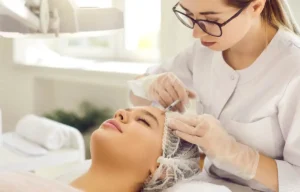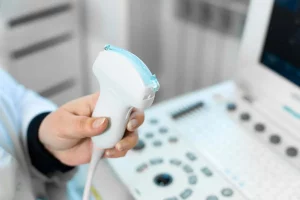
One of the most popular annual non-surgical aesthetic procedures is dermal filler injections to the lips, and not even the COVID-19 lockdowns could stop the trend toward fuller lips.
You probably know someone who has tried lip filler, and you can find examples of flawlessly full lips all over social media. But if you are considering getting the injections for yourself, keep in mind that it is an actual treatment with real risks that you should consider before deciding to go through with it.
Who doesn’t wish they had more volume in their lips?
However, before you rush out and get your lips done, you should know a few things.
Is It Your First Time?
These days, it’s impossible to pick up a magazine or flip on the TV without coming face to face with a set of pouting lips, but some are more convincing than others. How can you get large lips without seeming unnatural, and what should you know before having lip fillers done?
Your interest in lip filler is understandable, but you likely still have many questions. To help you make an informed decision about getting lip filler for the first time, we’ve developed a list of the top 10 things to think about. These range from where to look for a reputable provider to the type of filler that will work best for you to the amount of pain you can expect to encounter, so here are the ten things you should know about before getting lip fillers:
1.) Find The Right Provider
We can’t stress enough how important it is that you pick the right provider. You should only ever obtain fillers under the supervision of a trained medical practitioner.
Lip filler injections are more complex and fast than the advertisements make them seem. One must have an in-depth knowledge of facial anatomy to inject into a blood artery, damage a nerve, or otherwise cause irreparable harm. You should also feel comfortable with the doctor’s previous work and demeanor as a patient.
It doesn’t hurt to ask for help narrowing down your options if you need help finding where to look. There have been numerous reports in the media about botched lip fillers applied by inexperienced individuals. Don’t be fooled by cheap salons; if you’re going to get it done, do it well. You can’t put on an excuse-avoiding pout and expect to get away with it.
2.) There Are Different Types of Fillers
There was a time when collagen was the secret to full lips. Permanent options are convenient in theory but can backfire if you aren’t happy with the final product or if you change your mind about needing them in the future. Hyaluronic acid (HA) has increased in recent years as a replacement. Since it is a naturally occurring component in the body and can store up to a thousand times its weight in water, HA is a great plumping agent. Another major selling point is that it is temporary and can be terminated without penalty should an issue occur.
3.) Lip Fillers Produce Natural Results
Answer honestly: what do you see when I say “lip filler”? Is it all the smug smirks and pouts that flood your feeds? In this case, lip fillers, especially those containing hyaluronic acid, can produce natural results that only amplify your already attractive features.
Naturally, it’s crucial to be able to articulate your aesthetic objectives. Communicate your needs to your service provider, and they will accommodate you.
4.) Lip Fillers Are Safe
The Food and Drug Administration has given fillers made from hyaluronic acid the green light, so they’re safe when administered by a trained professional. You should talk to your doctor if you have problems after getting lip fillers. HA fillers may be dissolved when necessary, whereas collagen lip fillers require much more work to remove.
The treatment’s overall safety depends on the practitioner’s expertise, education, and experience. This is why we initially stressed the significance of selecting a reliable service provider.
5.) Lip Filler Procedures Will Somewhat Hurt
Many people find lip fillers uncomfortable rather than painful. However, everyone’s pain threshold is different. Since the lips are so delicate, practitioners employ many numbing methods. Numbing cream and dental blocks (injections into the gums) are standard pain management methods. Discuss your choices with your healthcare provider. It is typical for your lips to be tender and puffy for a few days after receiving lip filler.
6.) It’s A Swift Procedure
Getting lip injections is often advertised as a “lunchtime operation,” and it truly is that simple. First-time patients usually have a shorter consultation to review their medical history and treatment objectives. After that, numbing cream can be administered, and “before” pictures taken. The time required for injections is minimal.
7.) Expect Some Side Effects
Because your lips are so delicate, they may feel puffy and painful immediately following therapy. Although some people may feel better after just one day, it may take two to three days for others. Bruising, redness and pinprick marks are frequent after HA injections since they are administered via needles or cannulas. There is also the possibility of an allergic reaction, as there always is with medical intervention.
8.) You May Need More Than One Appointment
Patience is usually required when trying to achieve a fuller pout for the first time. Spreading out your injections over time can help you achieve a more natural and progressive increase or decrease in lip size. Your provider can tailor the amount of filler injected to your desired results, so you won’t have to worry about seeing dramatic changes after just one appointment.
9.) Lip Fillers Aren’t Permanent
The average duration of lip fillers is between 5 and 8 months; however, this might vary from person to person because everyone’s metabolism is unique. Lip filler tends to fade faster than in other areas of the face because of the lips’ continual movement, which causes the filler to break down more quickly. As a result, touch-ups every six months may be necessary after getting lip filler.
10.) Don’ts Before Your Lip Filler Appointment
Aspirin, ibuprofen, vitamin E, and fish oil supplements are natural blood thinners and may increase the likelihood that you will bruise after getting lip filler injections. If you are taking any prescription containing aspirin, discuss this with your doctor or practitioner. Even so, paracetamol can still be used in this context. To add insult to injury, alcoholic beverages are strictly forbidden. Avoid drinking the night before; doing so increases your risk of injury.
Takeaway
Do your homework, and that’s the main takeaway. Once the lip injections are there, undoing them will cost you extra time and resources. But if you do it right the first time, you can enjoy all the perks without downsides. If you are interested in lip injections, consider contacting our clinic, Glo Academy. We can tailor our services depending on your needs.





